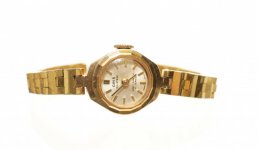Hi.
I shoot a lot of jewellery and small objects for our charity and speed is of the essence so editing has to be kept to a minimum, and the shot has to be ready to upload as is with just cropping, minor exposure settings and focus.
I recently watched a YouTube video who advocates setting the camera to shutter priority, and adjusting the ISO to get the intensity bars on the histogram as far to the right as possible. This is to achieve as pure white a background as possible. Then to put the subject in frame and adjusting for this.
The success of this has been reasonably good, and reduced the amount for post editing. However, I bought a cheap lens attached ring flash and tried it tonight and found that It's made no difference to the subject foreground exposure. I discovered that it doesn't like shutter priority, and fires before the shutter has opened. There is no adjustment on the new flash and when I went to aperture priority I can adjust everything to work correctly.
So should I be shooting entirely manually for small object macro photography?
Kind regards.
I shoot a lot of jewellery and small objects for our charity and speed is of the essence so editing has to be kept to a minimum, and the shot has to be ready to upload as is with just cropping, minor exposure settings and focus.
I recently watched a YouTube video who advocates setting the camera to shutter priority, and adjusting the ISO to get the intensity bars on the histogram as far to the right as possible. This is to achieve as pure white a background as possible. Then to put the subject in frame and adjusting for this.
The success of this has been reasonably good, and reduced the amount for post editing. However, I bought a cheap lens attached ring flash and tried it tonight and found that It's made no difference to the subject foreground exposure. I discovered that it doesn't like shutter priority, and fires before the shutter has opened. There is no adjustment on the new flash and when I went to aperture priority I can adjust everything to work correctly.
So should I be shooting entirely manually for small object macro photography?
Kind regards.
Last edited:

